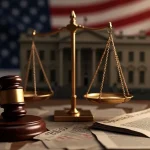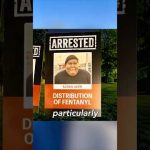In recent times, the uncertainty surrounding America’s economic policies has reached impressively high levels, much like a roller coaster zooming up and down. The focal point of this unpredictability? President Trump’s back-and-forth approach to tariffs has left financial markets in a panic and many people wondering if a recession is lurking just around the corner. Economists from several major financial institutions have taken a closer look, raising eyebrows and worries along the way.
According to a survey published in *The Wall Street Journal*, economists are feeling a bit jittery. They indicated that the chances of a recession occurring within the next year have climbed to around 45%. It’s still less than the gloomy projections some had expected in the past, where a staggering 60% chance seemed more realistic. In fact, it’s interesting to note that those previous forecasts didn’t result in an actual recession. So, there’s a glimmer of hope hiding in all that uncertainty.
Experts from firms like JP Morgan, Moody’s, KPMG, and the Economist Intelligence Unit are grappling with these forecasts like it’s a game of chess, trying to predict the next moves. Diane Swonk from KPMG threw out a 60% chance for a recession this year, implying that things could take a turn for the worse if Trump’s tariff implementation continues. These tariffs could slow down capital spending, which in turn, could freeze the economy like a popsicle on a winter’s day.
The specter of recession isn’t purely economic lingo; it’s about people’s livelihoods and stability. When economists discuss a recession, they refer to two consecutive quarters of negative growth in gross domestic product (GDP). However, the National Bureau of Economic Research looks beyond just numbers—it examines employment rates, consumer spending, and even how well industries are producing goods. If everyday folks feel uncertain, they’re less likely to spend money, and when that happens, the economy can hit a pothole.
With tariffs becoming a constant issue, they may also create what’s termed “stagflation,” a nasty cocktail of slowing economic growth and rising prices, much like the unpredictable weather. The Federal Reserve, tasked with keeping inflation and unemployment low, is watching these developments closely. As inflation rises, they face the challenge of keeping things cool without making the situation worse. In such a scenario, even an increase in wages could lead to a vicious cycle of rising prices that no one wants to grapple with.
While President Trump has recently signaled a desire to soften his tariff stances, including potentially reducing the previously hefty 145% tariffs on goods from China, uncertainty still looms. These tariffs have a significant impact on market trust, which is as vital as oil is for machinery. If markets don’t trust that the road ahead is clear, they’ll hesitate to make bold moves. Experts suggest that for any hope of reducing recession fears, clear communication and a stable plan are essential. The economy needs trust, and as history shows, without it, things can get a bit dicey.
So, as Americans watch these economic developments unfold, the reality is that a lot is riding on the unpredictable chess match of tariffs and trade. Will the economy remain steady, or will it plunge into the uncertain waters of recession? For now, uncertainty reigns supreme, but let’s hope the market finds its footing before it spins completely off its axis.




